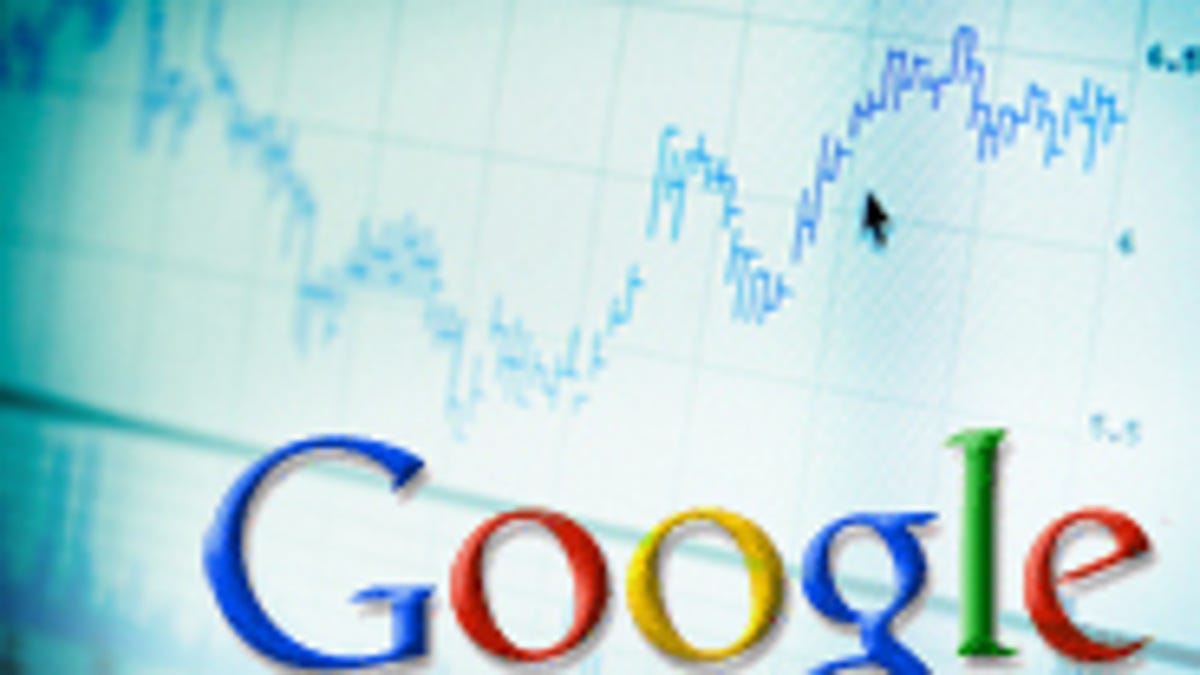Google revenue climbs, meets expectations
In what could be a positive sign for online ads, company posts positive quarterly financial results, saying ad sales were recovering while it managed expenses during the economic downturn.

In what could be a positive sign for online advertising, Google said on Thursday that its second-quarter revenue rose from a year ago as ad spending in certain areas recovered and the company did well at managing expenses.
In what it termed "a very good quarter," Google posted revenue of $4.07 billion for the second quarter, excluding commissions paid to advertisers, up from a year ago and a smidge higher than analyst estimates.
In a conference call, Google Chief Executive Eric Schmidt said he was very pleased with the results the company posted as the economy struggles to recover. "It demonstrates our resilience in what continues to be a very difficult environment," he said. "Google's business appears to have stabilized," as consumers turned to the Web to find the best deals and ad sales were strong.
Schmidt said he couldn't forecast when the economy would improve.
"It's too early for us to tell when the recovery will materialize...A quarter ago, we had no idea where the bottom was," he said. "It became clear starting roughly at Christmas that people were spending more time searching and when they were purchasing products they were purchasing products of less value."
Ad spending, meanwhile, is returning, particularly in verticals such as shopping and travel, but not for financial companies yet. "We're not, at the moment, looking at the downward spiral we thought we would see six months ago," he said.
Revenue for the quarter ended June 30 was $5.52 billion, including traffic acquisition costs, up 3 percent from a year go. Traffic acquisition costs paid to advertisers were $1.45 billion, representing 27 percent of ad revenues. Excluding those commission, net revenue was $4.1 billion.
Net income was $1.48 billion, or earnings per share of $4.66, compared to $1.25 billion and $3.92 a share, a year ago. Excluding certain items, Google's earnings were $5.36 a share.
On average, analysts surveyed by Thomson Reuters had expected revenue excluding commissions to be $4.06 billion and earnings per share of $5.09.
The second quarter is typically a slower quarter because of reduced business activity during the summer, said Chief Financial Officer Patrick Pichette.
Aggregate paid clicks on ads served by Google rose 15 percent from a year ago, but were down 2 percent from the first quarter, while the average cost-per-click dropped 13 percent from a year ago and rose 5 percent from the first quarter. Traffic acquisition costs, or advertiser commissions, were down from a year ago.
The company has 65 percent of the search market, according to ComScore, followed by Yahoo with 19.6 percent, and Microsoft with 8.4 percent.
YouTube is starting to pay off, according to Nikesh Arora, president of global sales operations and business development. Google is making money off billions of videos every month, with monetizable views tripling from a year ago, he said.
"We're really pleased with the trajectory" and revenue growth (for YouTube), he said. "And in the (near) future, we see profitable business."
Google has about 20,000 full-time employees, down 375 from the end of the first quarter, mostly from a reduction in sales and marketing positions that was announced last quarter, Pichette said.
Google's revenue figures apparently didn't please Wall Street--Google's shares were down nearly 3 percent in after-hours trade, to $429.65.
This post was updated at 2:30 p.m. PDT with more details and at 2 p.m. PDT with comments from company's conference call.

